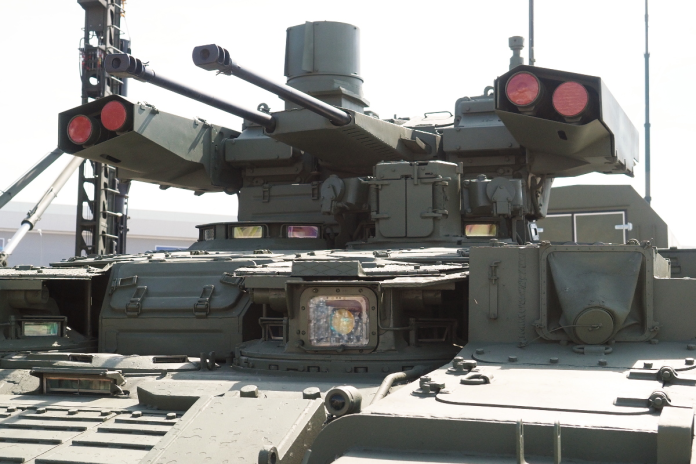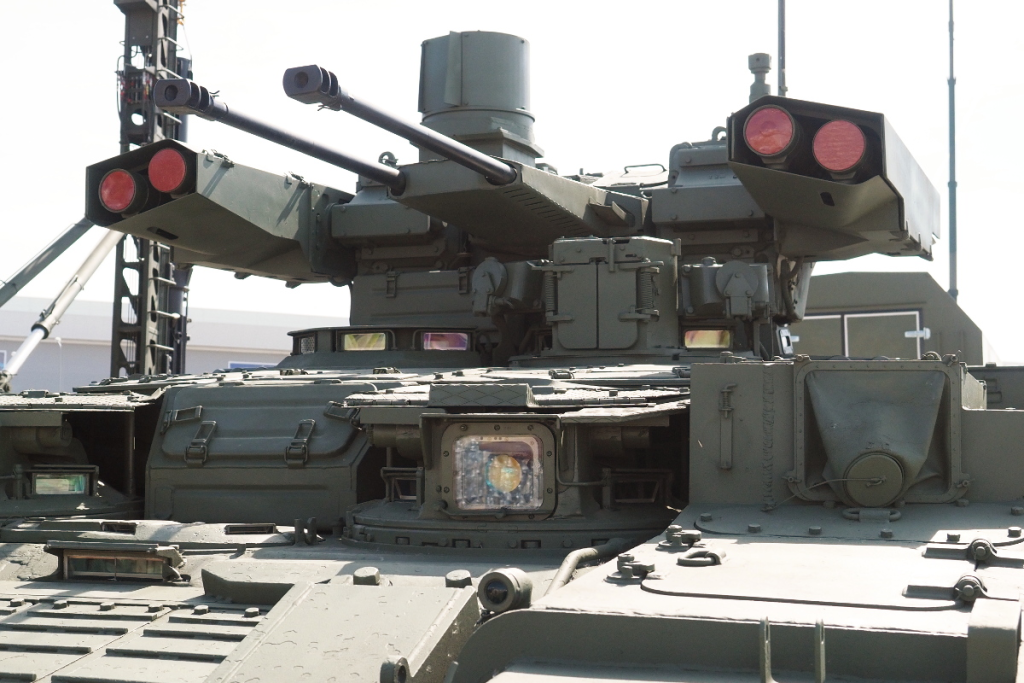
It was always taken for granted that the ground force’s primary striking force remained the tank. Now we can acknowledge that the BMPTs are included among them, Alexander Potapov, the head of Uralvagonzavod, said in January 2025. His comment marked a slight but significant shift in the Russian military doctrine an acknowledgement that the battlefield itself has changed, and so too must the tools that try to conquer it.

BMPT “Terminator” is neither a classic tank nor an infantry fighting vehicle, but rather an all-purpose guardian for Russian armoured spearheads, shaped through the fires of city combat and tempered with the Ukraine’s lessons. With its intimidating variety of arms, sophisticated protection, and multi-target engagement, the Terminator is designed to answer a perennial Russian armoured problem how to survive and win amidst environments that are saturated with the threat of anti-tank munitions.
Fresh shipments of renovated 2025-series BMPTs to the Russian military recently sparked renewed discussion among military observers. Are these vehicles the future of armoured combat, or an expensive experiment that will go the way of all the others? Here are seven critical insights into what is formidable and weak about the Terminator.

1. Origins in the Ruins of Chechnya
The BMPT’s genesis lies in Russia’s bruising experiences during the Chechen wars of the 1990s and early 2000s. Main battle tanks, while effective in open terrain, proved disastrously exposed in dense urban environments. Snipers, RPG teams, and anti-tank missile crews operating from rooftops and hidden positions inflicted heavy losses on unsupported armoured columns. In response, Russian designers envisioned a vehicle that could match a tank’s mobility and protection but deliver rapid, multi-directional firepower against infantry and light armor.
It was to become the BMPT a “Tank Support Fighting Vehicle” constructed around proven tank chasses like the T-72, not equipped with a single large-bore gun but an arsenal that can strike above, below, and around. Its mission: to shelter tanks from the very dangers that previously killed them.
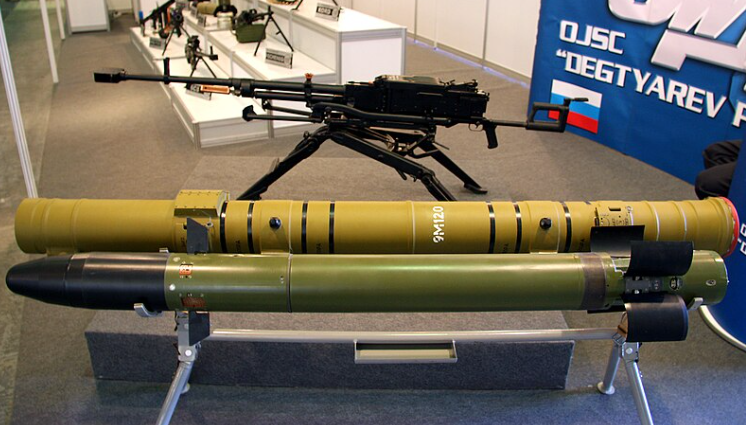
2. A Multi-Weapon Arsenal
BMPT production models are equipped with twin 30 mm 2A42 autocannons, four 9M120 Ataka-T guided missiles, a coax 7.62 mm PKTM machine gun, and two 30 mm automatic grenade launchers. Together, these facilitate saturating trenches, upper levels, and unseen areas with continuous fire, while the Ataka missiles, mounting both tandem-charge and thermobaric warheads, can attack bunkers or enemy armour at ranges up to 6 km.
Height advantage over the guns allows for rooftop and high-window shots that tanks are unable to achieve. The grenade launchers fill dead ground to 600 meters, a distance where first-person-view drones and recoilless rifles excel. It is this multi-layered firepower that is meant to keep the anti-tank squads pinned down, with the tanks attending to hard targets.
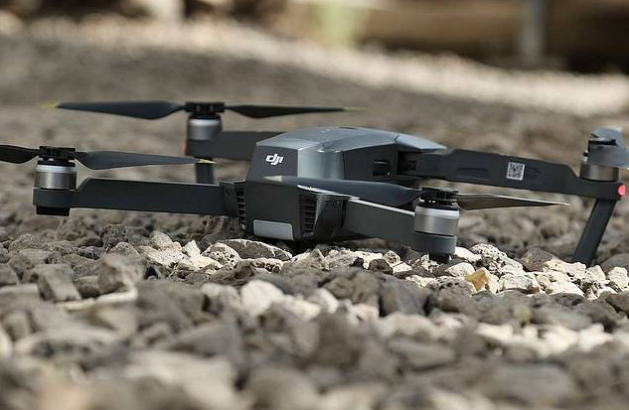
3. 2025 Upgrades for a Drone-Saturated Battlefield
Latest BMPTs are also equipped with extended dynamic protection blocks, strengthened side skirts, and multi-layered slat and cage configurations to combat top-attack munitions. They also come with counter-drone mesh screens and an integrated compact electronic warfare system that is meant to jam radio-linked drones and disable seeker performance.
A revitalized digital fire-control system enables commander and gunner to fire at two separate targets at once, defeating ambush squads before they can attack. These upgrades mirror battlefield dynamics in Ukraine, where lethal and ubiquitous unmanned air systems are the norm.
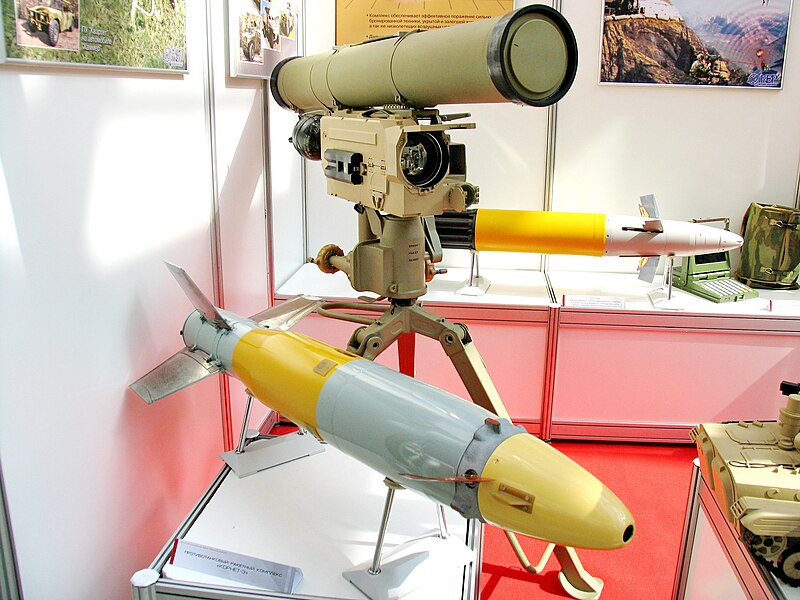
4. Urban and Challenging Terrain Design
Its use is most vital in cities and defended areas, where the threat can come from all directions and heights. Based on the Afghanistan and Chechnya campaigns, Russian designers provided the Terminator with fast-firing guns and heavy protection to move quickly with the tanks.
In reality, this entails stripping away RPG squads, anti-tank guided missile cells, and light armor vehicles so that main tanks will be left with 125 mm ammunition to spare for hardened sites. In built-up or forested terrain, the BMPT’s multi-target engagement capability will prevent tanks from being swamped by dispersed raiders.

5. Battlefield Performance and Vehicle Losses
Despite all the buzz about it being practically indestructible, the BMPT has suffered losses in Ukraine. The first documented destruction occurred in February 2023, when the Ukrainians disabled a Terminator near Luhansk and finished it with an artillery round. At least three other BMPTs were seen to be confirmed destroyed since then, according to Oryx’s open-source tracking.
Ukrainian strategy has preferred kamikaze drone swarms, accurate artillery, and joint attacks versus BMPTs that lack sufficient support. Both attacks demonstrate that even sophisticated protection cannot make up for inadequate employment or exposure to combined arms units.
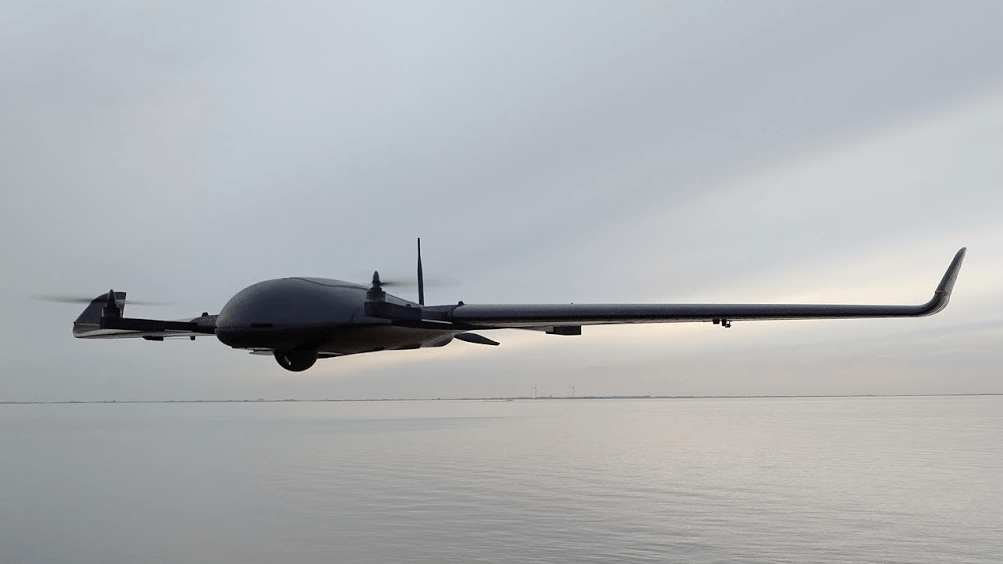
6. A Russian Armored Doctrine Shift
Potapov’s pronouncement that the BMPTs have also become an equal to tanks as a first-strike force is a doctrinal shift. Historically, Russian ground attacks were built around tanks, with other platforms serving support duties. The Terminator’s inclusion is evidence that contemporary battlefield environments —jammed with transportable anti-tank missiles and UAVs— require dedicated platforms to guard and facilitate tanks.
This upgrade is part of the broader Russian effort to rebuild armored divisions, with the latest T-72B3M and T-90M tanks all getting similar drone-jamming and electronic attack capabilities.

7. Strengths and Weaknesses
The BMPT’s strengths lie in its multi-target engagement capability, vertical firing angles, and resilience against certain anti-tank threats. Its diverse armament makes it effective against infantry, light armor, and fortifications, while its armor and EW systems improve survivability.
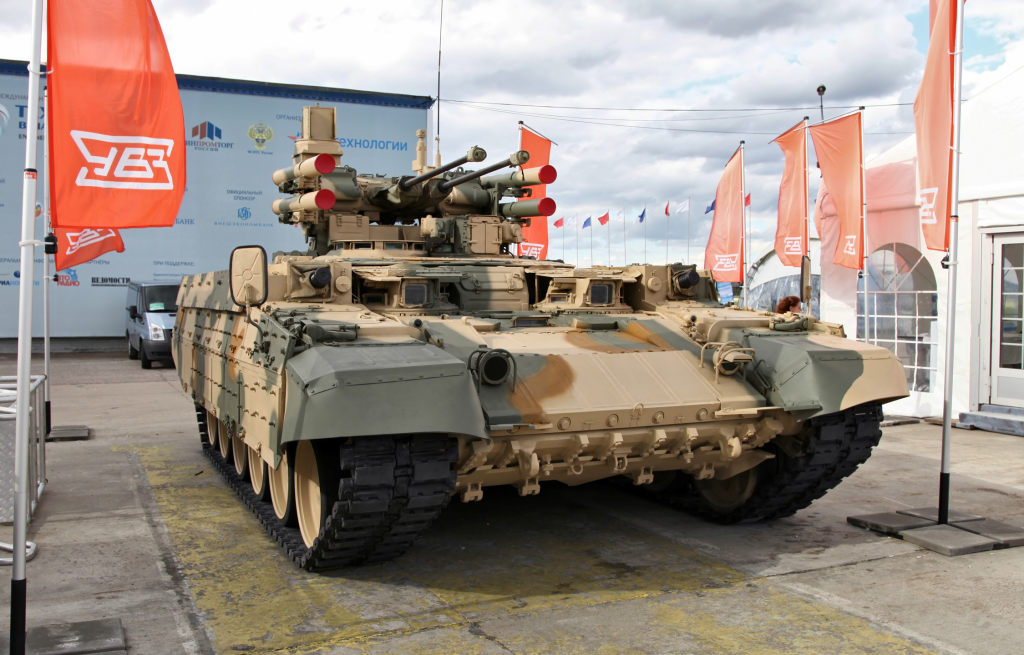
But it is not invulnerable. When pushed into mined or observed corridors, solo, the BMPT is vulnerable to top-attack drones and missiles with long ranges. Its best use is as part of a comprehensive package tanks, engineers, and recon to bust defense lines with minimal losses. Without that integration, the Terminator will merely be anther high-value target.
BMPT Terminator represents Moscow’s efforts to tailor armored combat to the needs of contemporary war, combining heavy protection with multi-role firepower. Its introduction for 2025, in an uprated form, represents Moscow’s determination to preserve these tanks at the front, but the future for the Terminator will depend greatly on how tactically astute it is utilized. In the harsh battlefield environments that exist for Ukraine, advanced war machines can be negated by bad tactics and the Terminator is not an exception.
